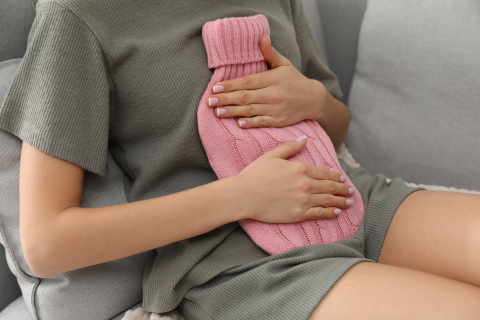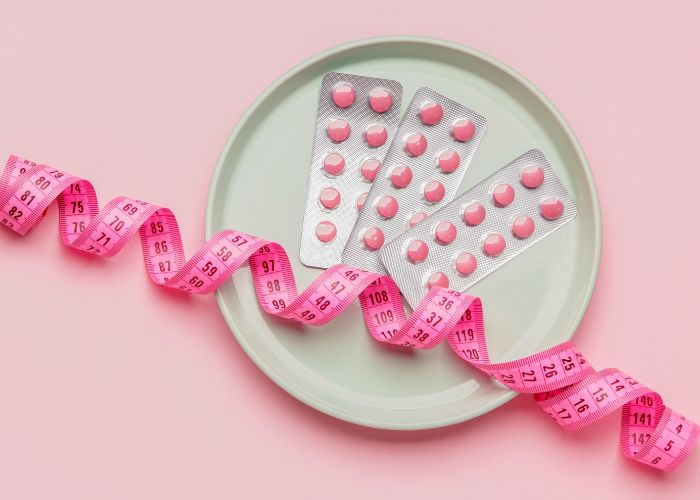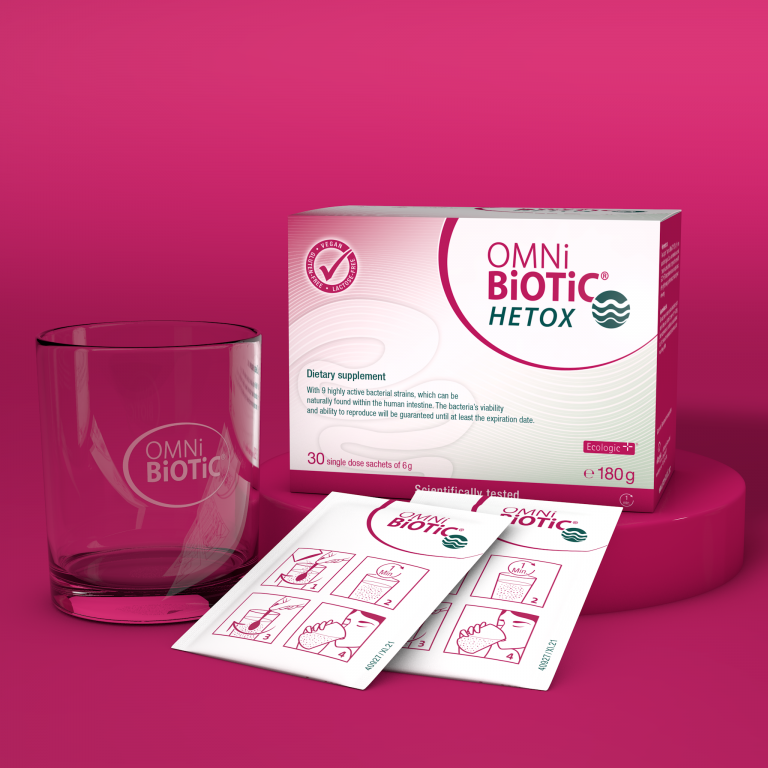There are roughly 2 billion bacteria per square centimetre in the epithelium of a woman’s vagina. Most of these are pure lactic acid bacteria. They are responsible for maintaining an acidic pH in the vagina as a protective shield against harmful microorganisms and controlling the balance of the vaginal flora.
What does “balance of the vaginal flora” mean?
The term “balance” refers to the healthy colonisation of the vagina with helpful lactic acid bacteria which keep unwanted germs in check. Lactic acid bacteria regulate the pH-value, which is around an acidic 3,8-4,4 in a healthy vagina. When the pH-value in the vagina falls out of the previously mentioned range, it creates the optimal living conditions for harmful fungi and germs. At the same time, the number of helpful lactobacilli is reduced: This causes an imbalance (dysbiosis), and the vagina loses its protective shield. Pathogenic germs gain control and cause either bacterial vaginosis or thrush.
But what is the difference between bacterial vaginosis and thrush?
There are a few big differences: As a fungal infection, thrush is an infectious disease, whereas bacterial vaginosis is a disruption of the natural bacterial colonisation of the vagina. Bacteria are living beings and can survive on their own. Fungi, on the other hand, need a host-cell to replicate and survive. As the name suggests, bacterial vaginosis is caused by bacteria and thrush by fungi. Both diseases can erupt when the vaginal flora is impaired and there are too little “good” bacteria.
Bacterial vaginosis
If the pH-value of the vagina is impaired, i.e. not in the ideal acidic environment, harmful germs can enter and multiply easily. This excess of bad bacteria such as Gardnerella vaginalis, the main pathogen of bacterial vaginosis, drive out the lactic acid bacteria and enable other pathogens to spread unhindered. By now, most women have an uncomfortable feeling in their genital area. Typical symptoms of bacterial vaginosis include itchiness and a runny, grey-white discharge that smells like fish. Amines are responsible for this unpleasant smell and are released when Gardnerella break down proteins.
Thrush
Thrush, also known as vaginal mycosis, is the most common fungal infection in women and is caused by yeast, especially Candida albicans. Approximately 3 out of 4 women suffer from thrush at least once in their lives. Common symptoms that occur during this infection include itchiness, a burning sensation in the vagina, increased white-yellow and crumbly discharge, and pain during intercourse. Sometimes the urethra is also affected, which results in pain during urination. In comparison to bacterial vaginosis, there is no reduction of lactobacilli (lactic acid bacteria) and the vaginal discharge smells normal.
Symptoms of bacterial vaginosis and thrush
Bacterial vaginosis
- A fish-like smell in the genital area
- Runny, white-grey dischargeo
- Increased symptoms after intercourse
- No swelling
- No redness
- Bacteria: Gardnerella vaginalis
Thrush
- Normal smell
- Crumbly, white-yellow discharge
- Pain during intercourse
- Pain in the labia
- Vaginal redness
- Yeast fungus: Candida albicans
Causes for imbalance in the vaginal flora
There are many different causes for an imbalance of the vaginal flora. Vaginas are not free of germs but rather inhabited by natural and good bacteria. Lactobacilli are the main tenants of the vaginal mucosa. They convert the sugar in the vaginal mucosa into lactic acid to create an acidic environment. This acidic environment (pH values between 3,8 and 4,4) makes it difficult for pathogenic germs to multiply. All in all, it is difficult to determine where an imbalance in the vaginal flora comes from. Nevertheless, there are several causes that could play a role.
Hormonal changes can influence the vaginal flora
Hormonal changes are often the cause of an imbalance in the vaginal flora. Oestrogen is a very important hormone that determines the number of lactobacilli in the vagina. If oestrogen levels in the vagina are very low, e.g. during or after the period, then so is the number of lactic acid bacteria. Even hormonal contraceptives like the “pill” can enable an imbalance in the genital area.
Antibiotics annihilate “good” bacteria

The intake of antibiotics is unavoidable in some diseases. However, they also destroy healthy and helpful germs in the body, which puts the intestinal and vaginal flora at a disadvantage. That is why it is always recommended to not only rebuild the intestinal flora with probiotics after antibiotic therapy but also the vaginal flora.
Excessive hygiene influences the pH-value of the vagina
Hygiene is certainly very important for our health, we just shouldn’t overdo it. Many shower gels aren’t suitable for cleaning the genital area and can alter the pH-value of the vagina. Clean water or special genital, pH-neutral care products are perfect the job.
Synthetic clothes can trigger an imbalance
Although it’s hard to believe, even the wrong clothes can have a negative impact on the vagina. Synthetic fabrics generate a hot and humid environment in which unwanted fungi and bacteria are most likely to grow. When you next go clothes shopping, try to buy underwear made out of cotton.
Stress affects the entire organism
Stress notoriously harms the entire body. It is also the reason for an imbalance in the vaginal and intestinal flora, which facilitates the development of infections. Constant mental stress can indeed be the trigger for many different diseases.
An unhealthy diet
You are what you eat – and this is especially true for the vagina. An impaired intestinal flora also has repercussions on the vagina. Sugar, for example, is the food for harmful microorganisms in the body and enables them to multiply with ease.
Probiotics for the microbiome
The vaginal flora is mainly colonised by lactobacilli. If these bacteria are outnumbered, the microbiome becomes unbalanced and more vulnerable towards pathogenic germs. Probiotics are “living” bacteria that can be found in certain foods or special products at the pharmacy. These contain specially selected bacteria strains for the different areas of the body. Probiotics containing various lactobacilli are recommended for the vaginal flora to maintain a natural vaginal microbiome.
The intestinal and vaginal flora work together and have a significant impact on the entire body. That is why it is so important to take various infections seriously and only take antibiotics when absolutely necessary. Every diarrhoea and constipation has an impact on the vagina. Since the intestines are a reservoir for the bacterial colonisation of the vagina, it is important to have a healthy intestinal flora.






























